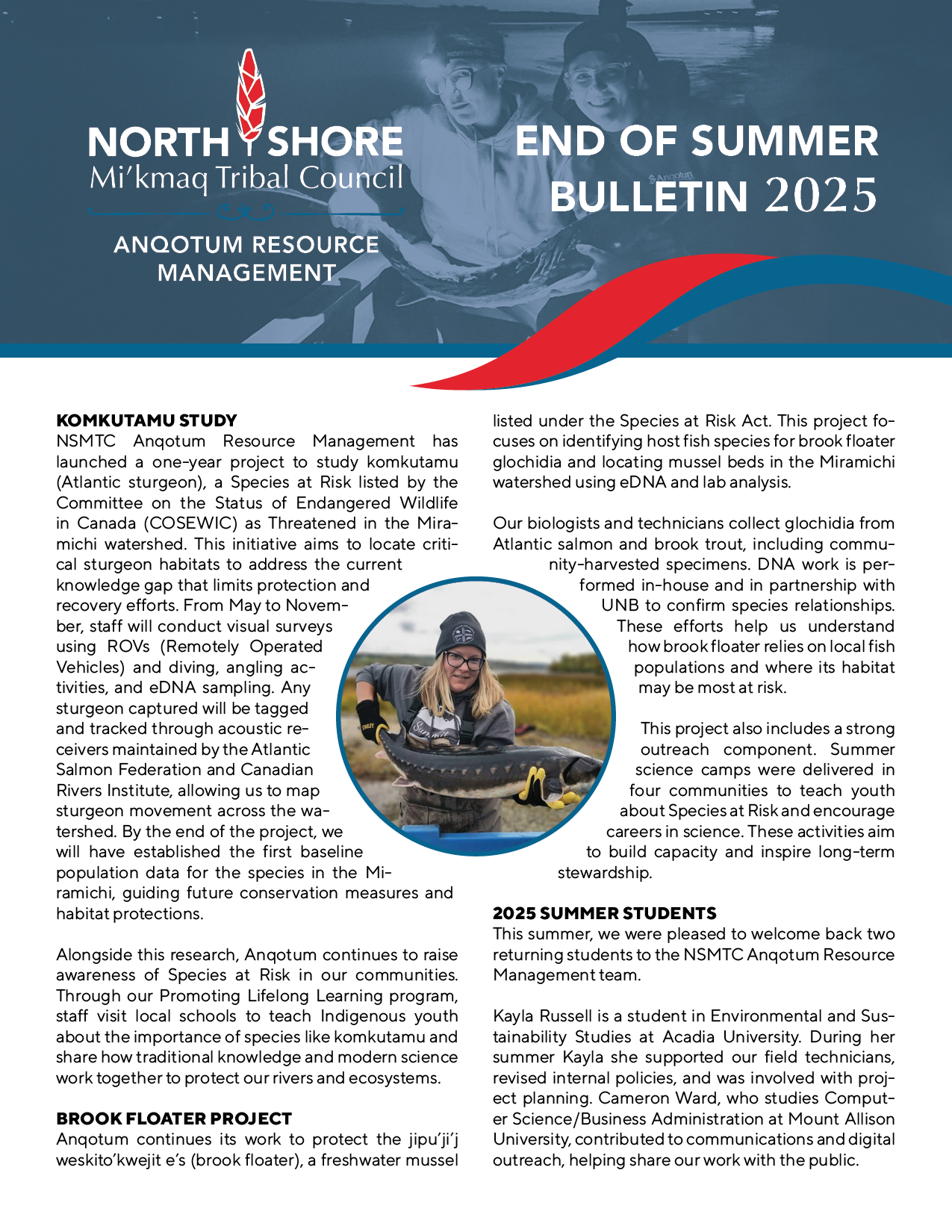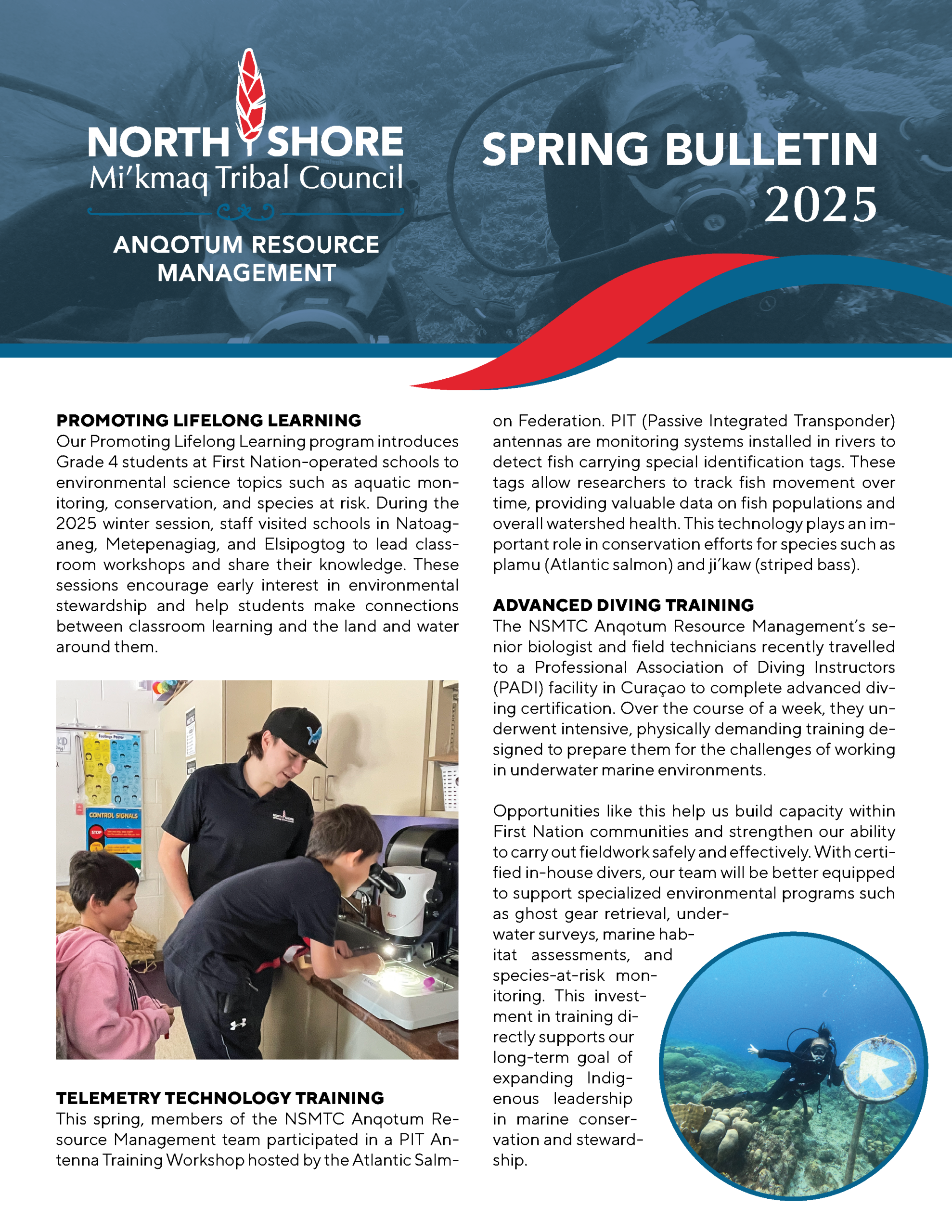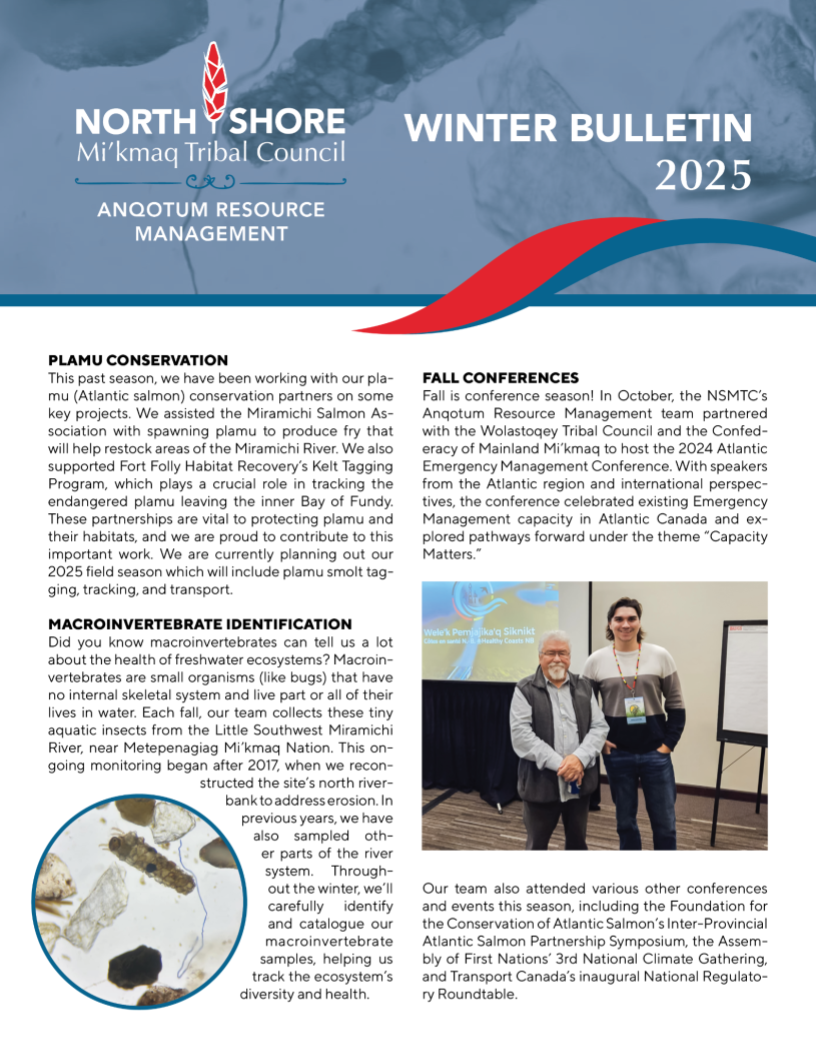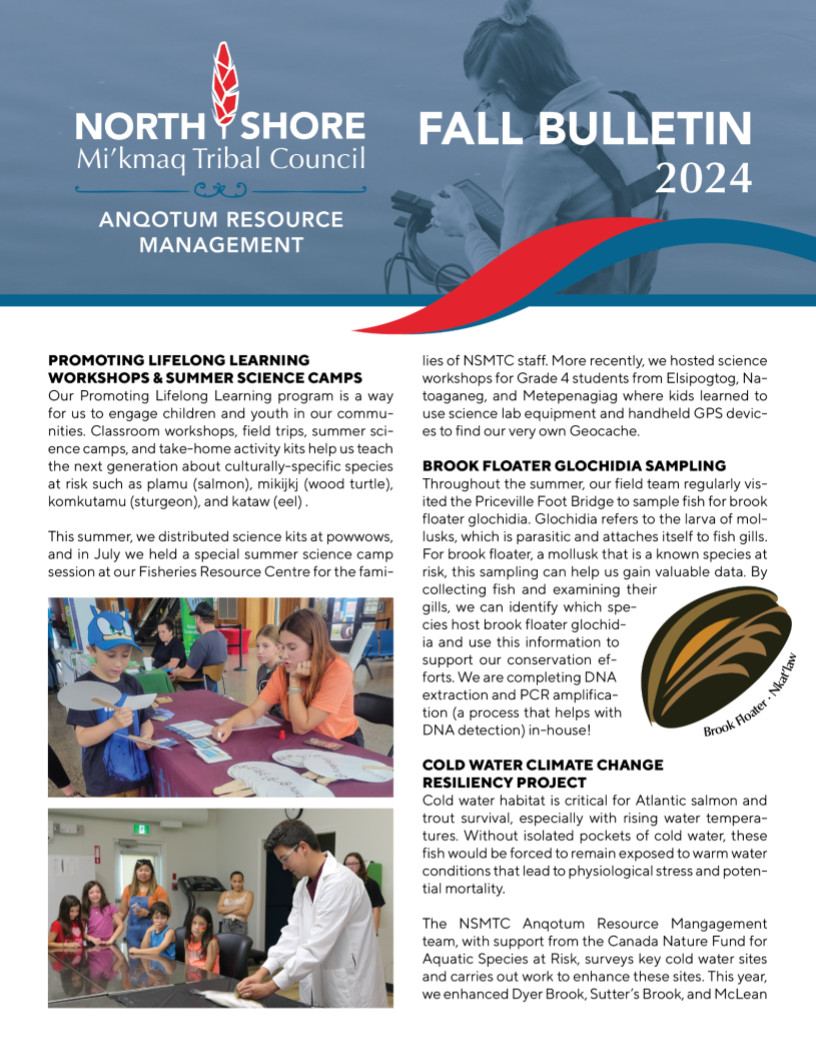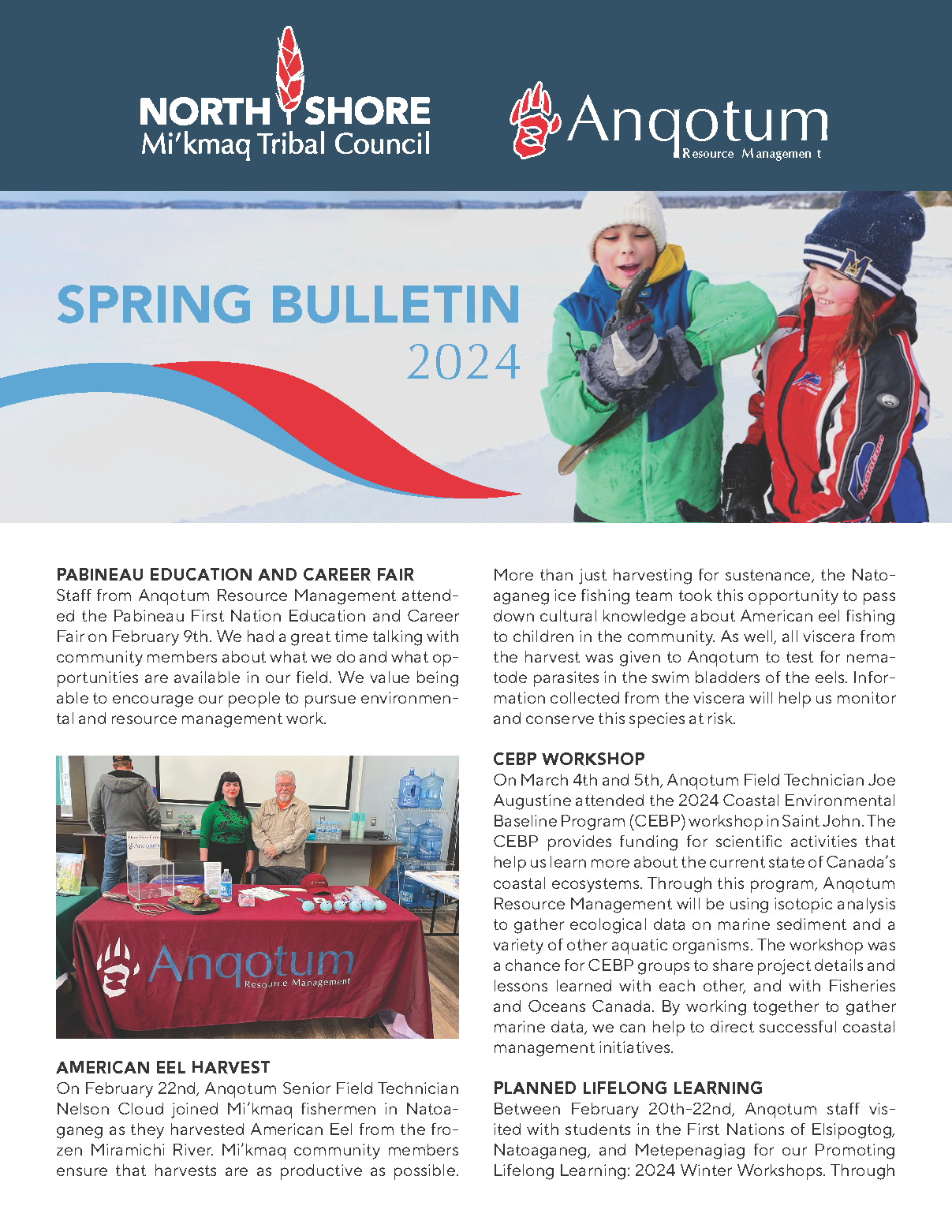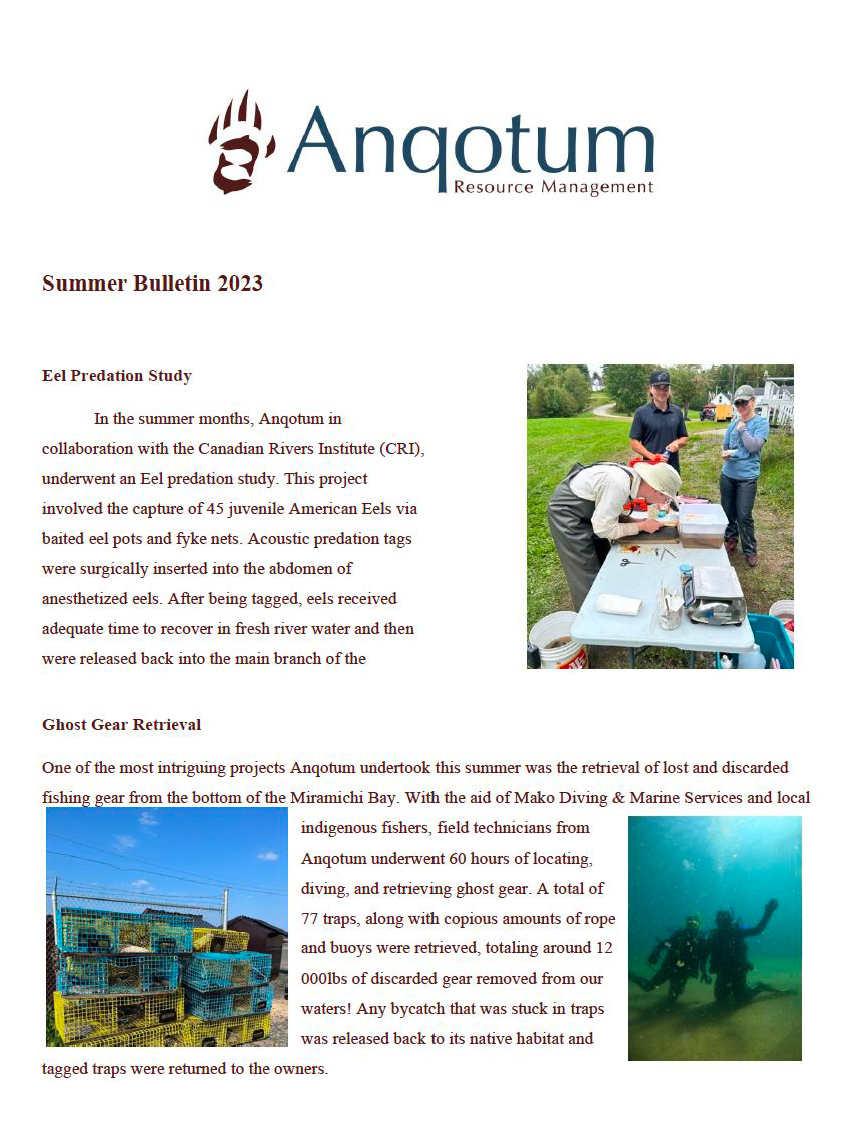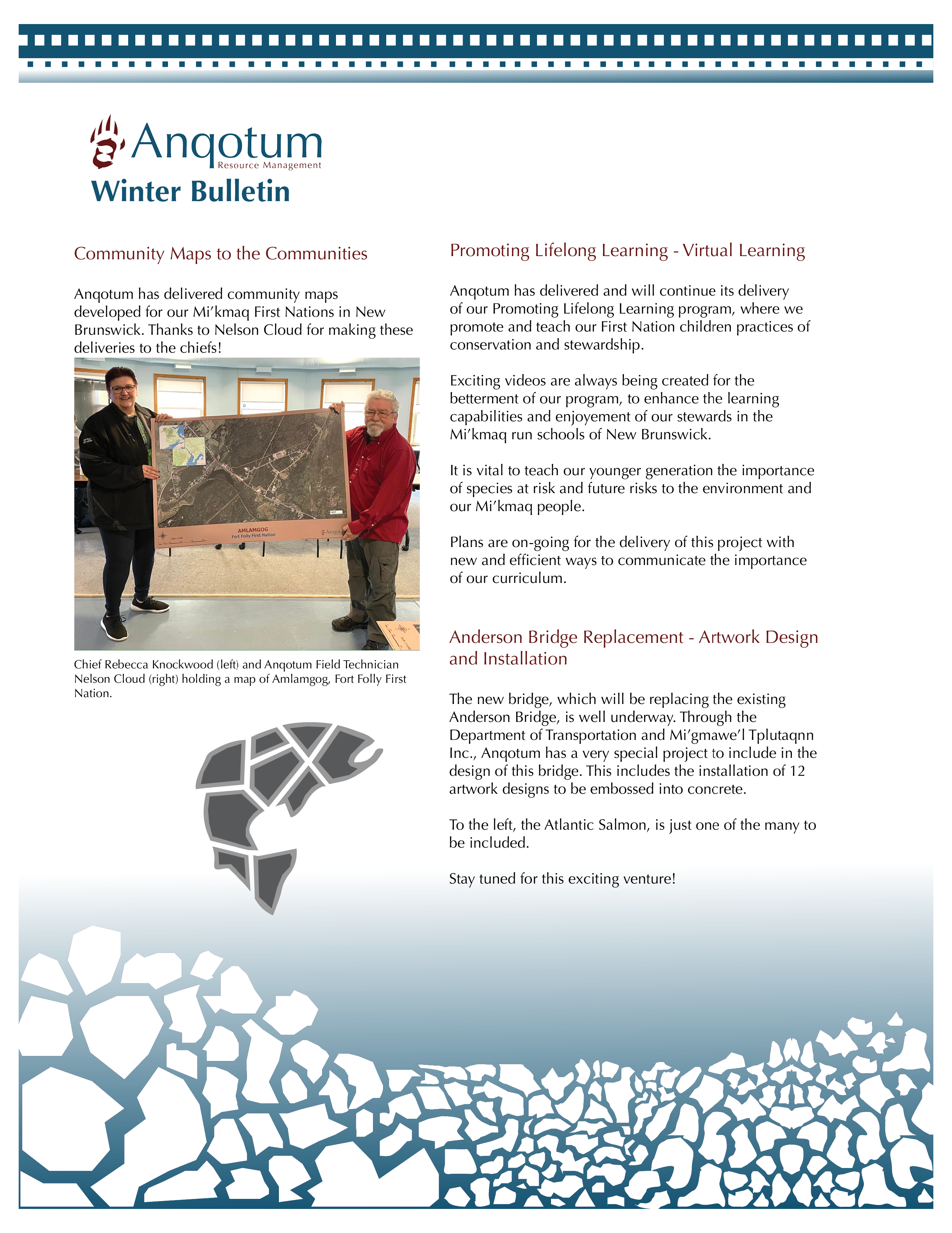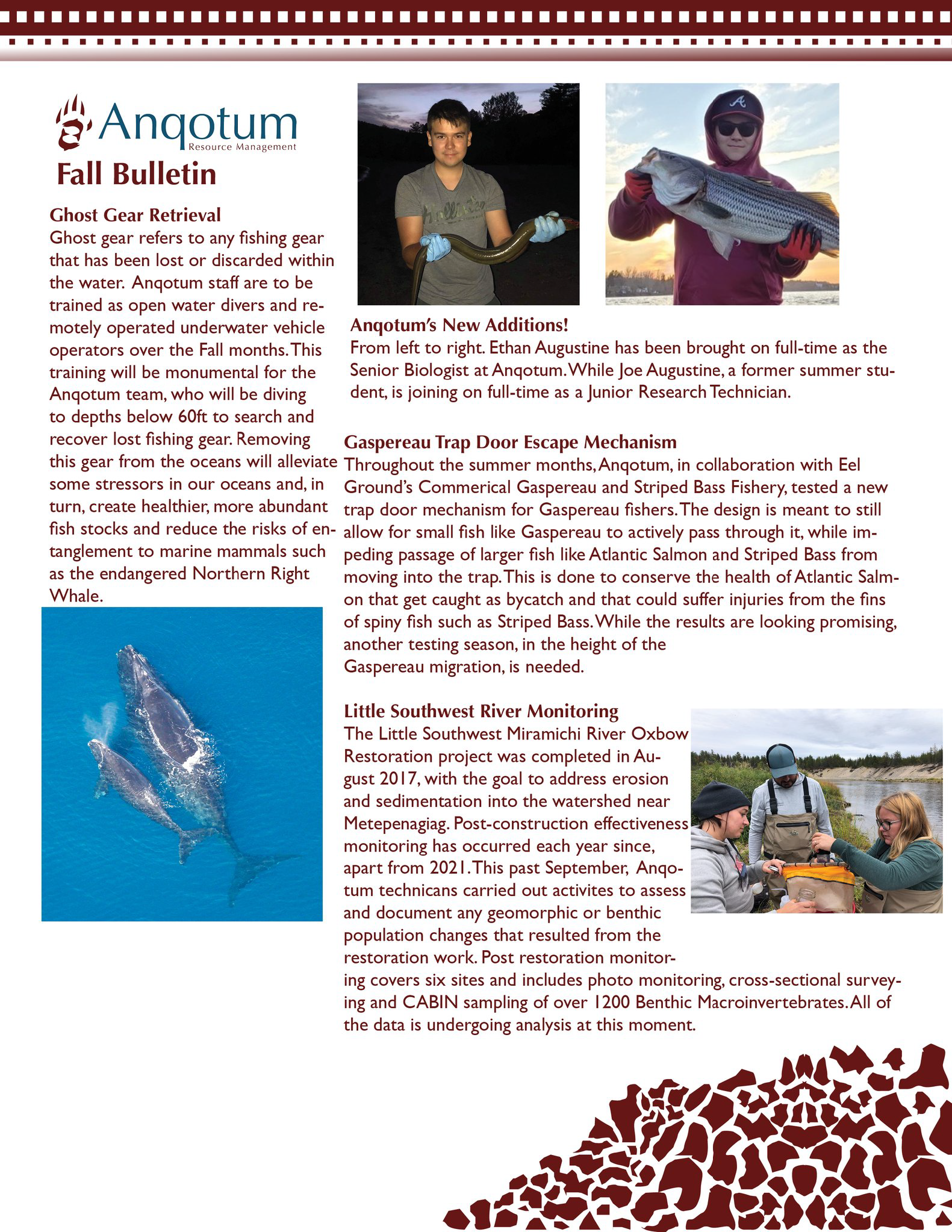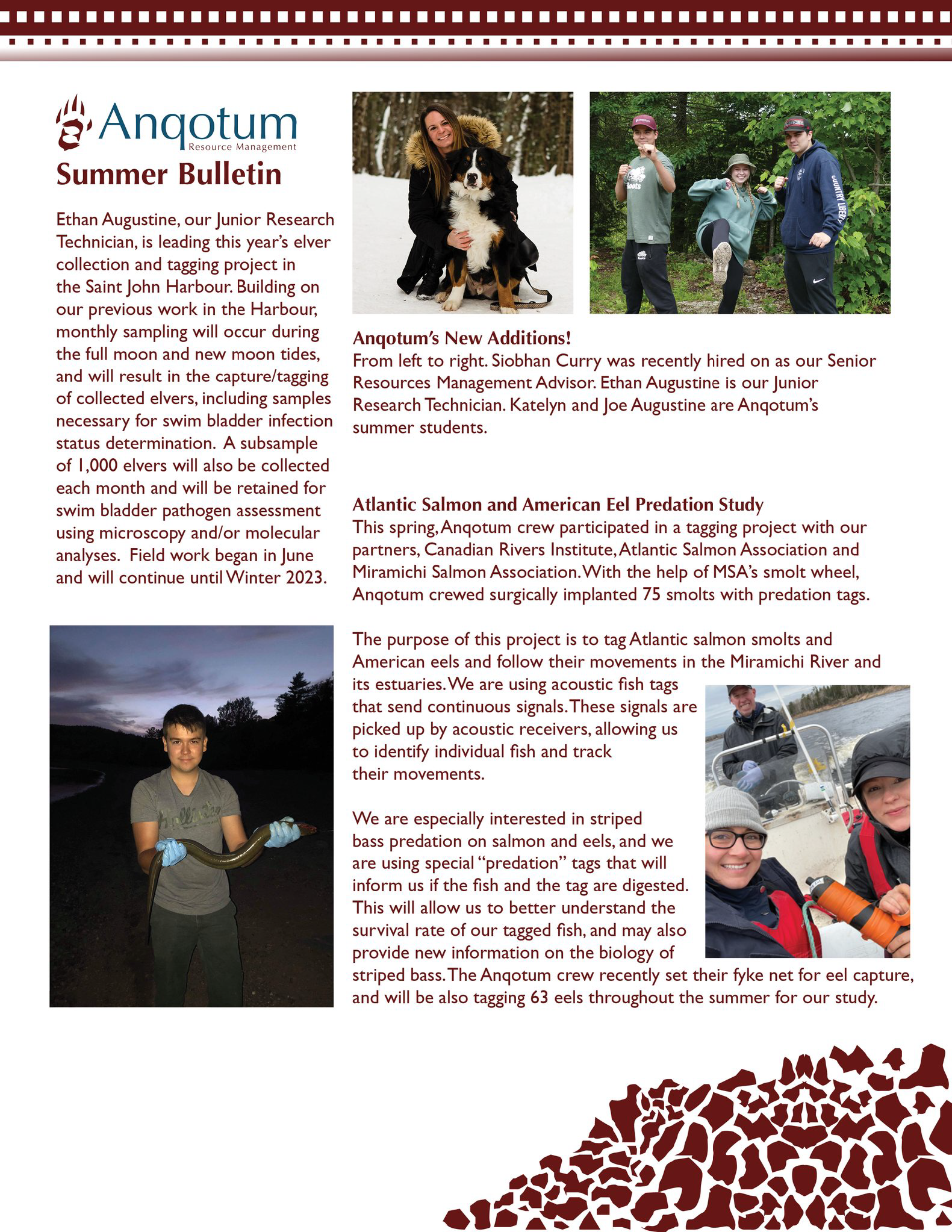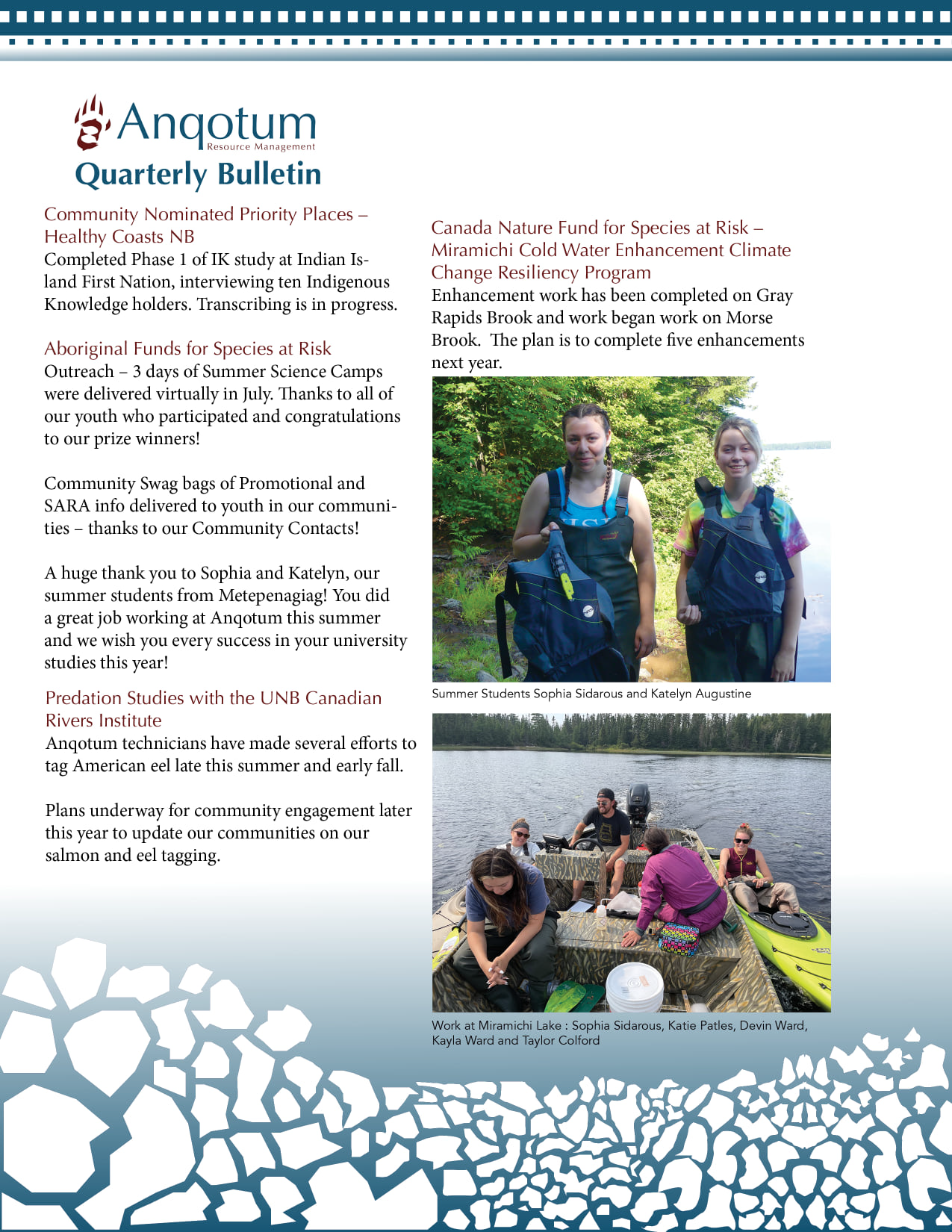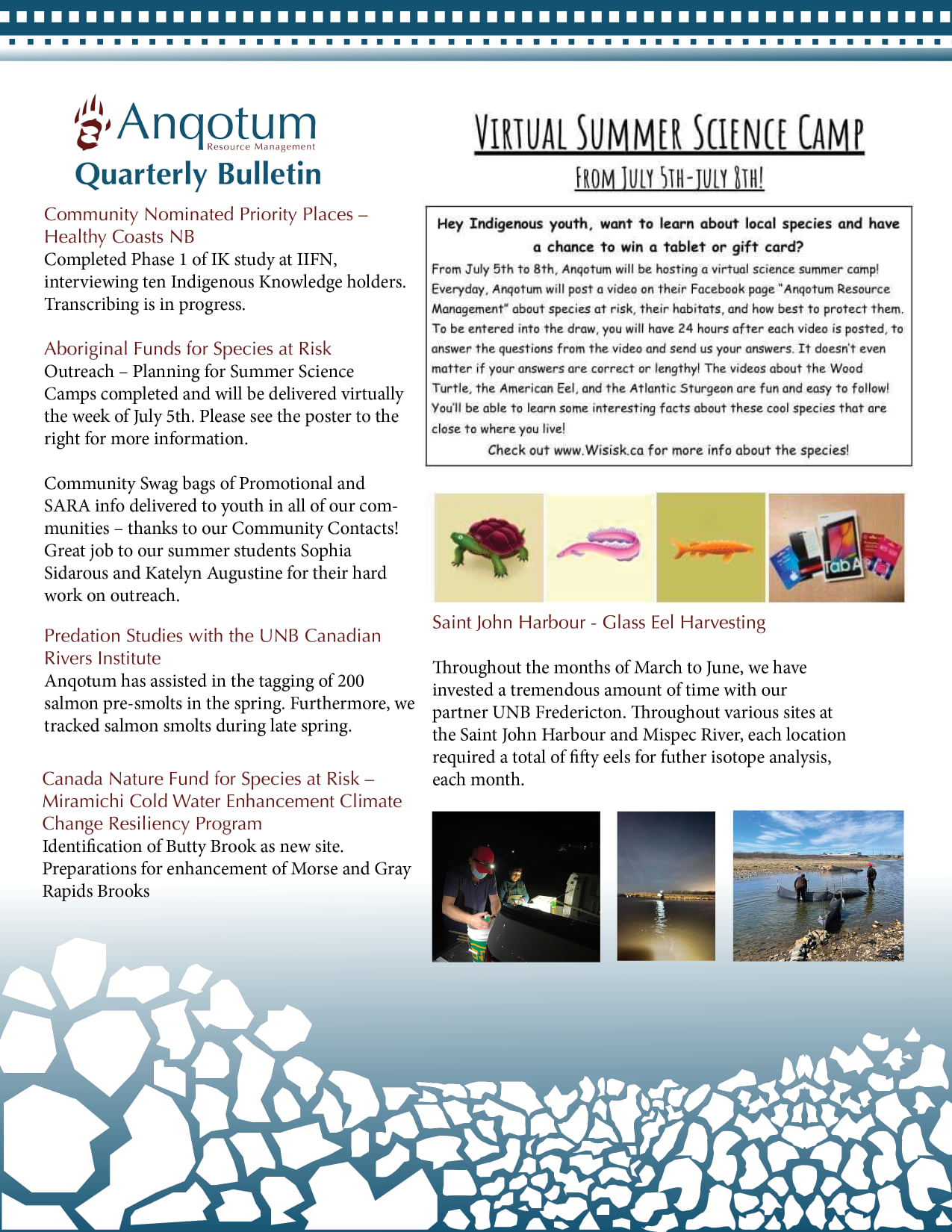We Care For Our Environment
What We Do
Where: Mi’kmaq communities
Our Work: We assist the Canadian Coast Guard with Indigenous recruitment, safety, rescue, oil spills training, and identification of derelict vessels within First Nations’ community territory. We also host special training sessions with fishers from our communities.
How it Helps: The Canadian Coast Guard works to ensure the safety of mariners and protect the marine environment. Our partnership allows us to connect community members to this important work.
Where: Miramichi River
Our Work: Over the last five years, we have surveyed and enhanced cold water pools at 11 key locations along the Miramichi watershed. We revisit these sites annually to make sure that the work we carried out is still holding up.
How it Helps: Cold water habitat is critical for Atlantic salmon and trout survival, especially with rising water temperatures. By enhancing cold water pools, we are able to make these havens more functional for the fish using them.
Where: NSMTC member communities
Our Work: Working with the Fishing Gear Coalition of Atlantic Canada (FGCAC) to facilitate the safe collection and disposal of end-of-life, abandoned, lost, and discarded fishing gear and related plastic waste.
How it Helps: Community members can responsibly dispose of lobster traps, steel crab pots, oyster cages, and maritime plastic rope and netting, free of charge at FGCAC-approved sites. We will also be able to gather valuable data on waste management, landfilling, recycling, and waste-to-energy opportunities.
Where: NSMTC member communities
Our Work: Increasing our understanding of Indigenous Knowledge Systems (IKS) by engaging with our member communities via surveys and an open-forum workshop.
How it Helps: Community members can responsibly dispose of lobster traps, steel crab pots, oyster cages, and maritime plastic rope and netting, free of charge at FGCAC-approved sites. We will also be able to gather valuable data on waste management, landfilling, recycling, and waste-to-energy opportunities.
Where: Gulf of Saint Lawrence coastal region of NB
Our Work: We work alongside partners and communities to identify, understand, and address environmental concerns that affect biodiversity, ecosystem integrity, and community well-being.
How it Helps: This project demonstrates the value of two-eyed seeing and community collaboration while helping to conserve species at risk.
Where: The Oxbow
Our Work: In 2017, we completed reconstruction of the north river bank of the Little Southwest Miramichi River adjacent to Metepenagiag Mi’kmaq Nation to reduce erosion coming from the area. Each September we reassess the site to learn about how our work has benefited the area. Species we pay special attention to are trout, salmon, bank swallows, and wood turtles. So far so good!
How it Helps: This project allowed us to reduce the sediment load entering the watercourse that was affecting critical habitat. The project continues to give us insight into river remediation and how it can benefit an ecosystem.
Where: Miramichi
Our Work: Plamu First is a three-day conference aimed at bringing together the Atlantic salmon community. We invite partners and participants to share and learn through presentations and round table discussions.
How it Helps: Through collaboration at the Plamu First conference, we are able to develop a unified action plan for Atlantic salmon conservation.
Where: First Nation-operated schools
Our Work: Each year, we host indoor and outdoor workshops for Grade 4 students that focus on culturally-specific species at risk, specifically wood turtles, Atlantic sturgeon, American eel, Atlantic salmon, and brook floater. These workshops also include input from community elders, the holders of traditional knowledge.
How it Helps: This program teaches youth about monitoring our aquatic resources and fosters community stewardship.
Where: NSMTC member communities
Our Work: Partnering with the Fishing Gear Coalition of Atlantic Canada (FGCAC) to share knowledge with our member nation communities, host workshops on sustainable fishing gear technology and software solutions, and post informative signage at community wharfs.
How it Helps: This program teaches youth about monitoring our aquatic resources and fosters community stewardship.
Where: Northwest Miramichi River
Our Work: We assist with Atlantic salmon research being conducted by partner organizations on the northwest branch of the Miramichi River. This work includes helping to collect, count, tag, and release juvenile salmon.
How it Helps: This research gives us valuable insight into Atlantic salmon population trends.
Where: Black’s Habour, Marsh Creek, Little River Estuary
Our Work: With the help of conservation partners, we are using isotopic analysis to gather ecological data on marine sediment and a variety of other aquatic organisms. We are then comparing the data we have collected to data from the Musquash Marine Protected Area.
How it Helps: This project will help us develop a food web for the organisms and substrates at our three project sites.
Where: Mi’kmaq communities
Our Work: Each year we host children and youth in our communities for a one-day summer science camp. We organize activities and games that teach camp-goers about our environment and species at risk.
How it Helps: Along with engaging our youth, we are able to ensure capacity-building at the community level.
Learn More
Contact Us
Fisheries Resource Centre
32 Micmac Road
Natoaganeg First Nation, NB E1V 4B1
506.627.2730
Our Team

Jodi MacIntosh
Administration Manager
Pam Ryan
Environmental Services Manager
Austin Martin
Finance Officer
Ethan Augustine
Senior Biologist
Nelson Cloud
Senior Field Technician
Siobhan Curry
Senior Resource Advisor
Taylor Colford
Field Technician
Joe Augustine
Field Technician
Katie Patles
Field Technician


